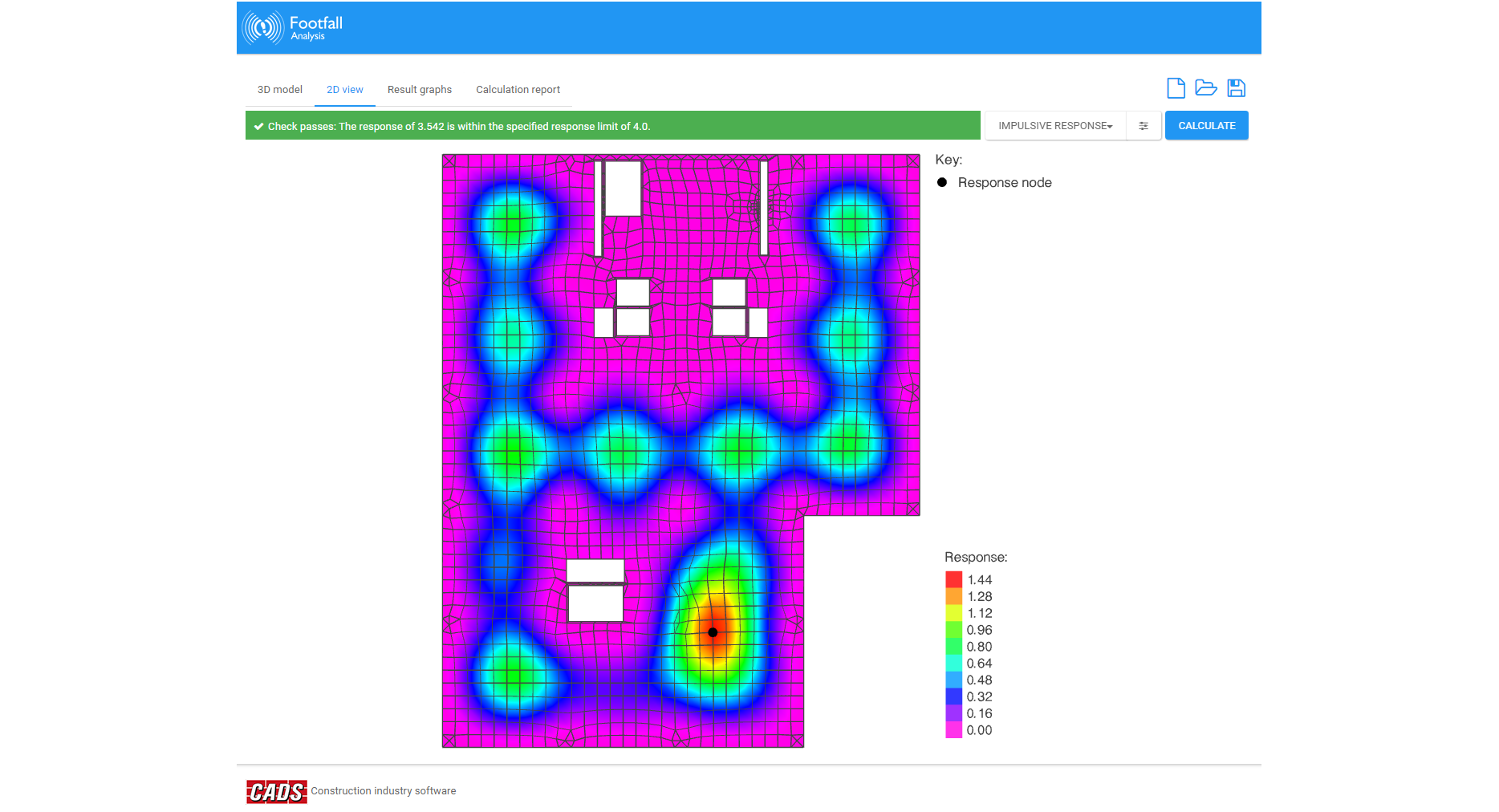Introduction
CADS Footfall Analysis (CFA) is post-processing software that is used in conjunction with Dlubal RFEM and SCIA Engineer to provide footfall response analysis calculation. Footfall response is of interest to users concerned about the vibration induced in their structures due to walking related activities. As advances in structural design result in more efficient and lighter irregular structures, sensitivity to vibration of the structures is becoming increasingly significant.
There is a known complexity of calculating footfall response on irregular floors or staircases of any type. CADS Footfall Analysis uses part of Dlubal RFEM or SCIA Engineer’s modal analysis results to predict the vibration levels at all locations on a floor. A rigorous analysis method is essential to enable an accurate investigation of the dynamic behaviour of the floor. The software incorporates the most up to date analysis procedures allowing the user to select between the two most used calculation methods available, namely the Concrete Centre Method (CCIP-016) and the Steel Construction Institute Method (P354).
Summary
- CFA links with Dlubal RFEM or SCIA Engineer, using the model geometry from there, thus the user is not required to create a second model specifically for footfall analysis
- Allows the user to analyse any type of structure for footfall analysis, irrespective of the shape, material or use
- Cumulative measurement of vibration levels – VDV analysis
- Quick and accurate predictions of resonant and impulsive (transient) responses
- Intuitive output enabling the engineer to advise of improvements of critical areas in a cost-effective way
- Pass/fail limit check in accordance with BS 6472 and ISO 10137
Full description
- Concrete Centre Method – CCIP-016 – A Design Guide for Footfall Induced Vibration of Structures
- The Steel Construction Institute Method – SCI P354 – Design of Floors for Vibration: A New Approach
- Choice of excitation forces: CCIP-016, SCI P354, AISC DG11 for floors and stairs
- Frequency weighting curves (BS 6841)
- Quick investigation for full model or specific areas
- Vibration Dose Analysis (VDV)
- Adjust the minimum and maximum walking frequency as well as the walker’s weight
- User input damping values
- Vary the number of footfalls for resonant response, user input or software calculated
- Environmental response limit based on BS 6472 and ISO 10137
- Overall maximum response factors and critical nodes
- Resonant analysis (maximum response factor, RMS acceleration, critical node, critical frequency)
- Impulsive (transient) analysis (maximum response factor, peak acceleration/velocity, RMS acceleration/velocity, critical node, critical frequency)
- Vibration dose values for both resonant and impulsive analyses
- Response factor vs walking frequency
- Mass participation vs eigenmodes
- Velocity time history
Operating system Windows 7 or above
Processor Minimum: Intel Core2Duo or AMD equivalent
RAM 2 GB (advised >4 GB)
Graphics controller 256 MB, supporting OpenGL
Free disk space 5 GB
Minimum resolution 1280 x 800
Licensed copy of SCIA Engineer Concept Edition (or above)
Non-uniform damping characteristics (esas.25) – included in the Professional Edition and above. Required only if the user wishes to use the damping value from the SCIA Engineer modal analysis, instead of the values suggested from guides.


















